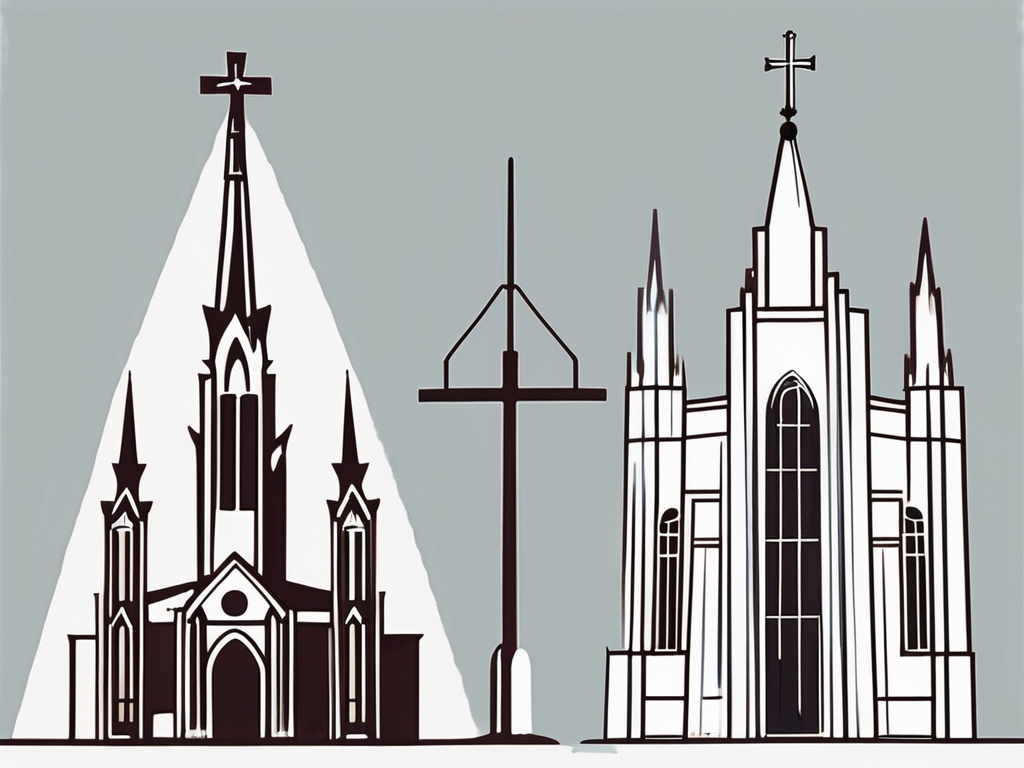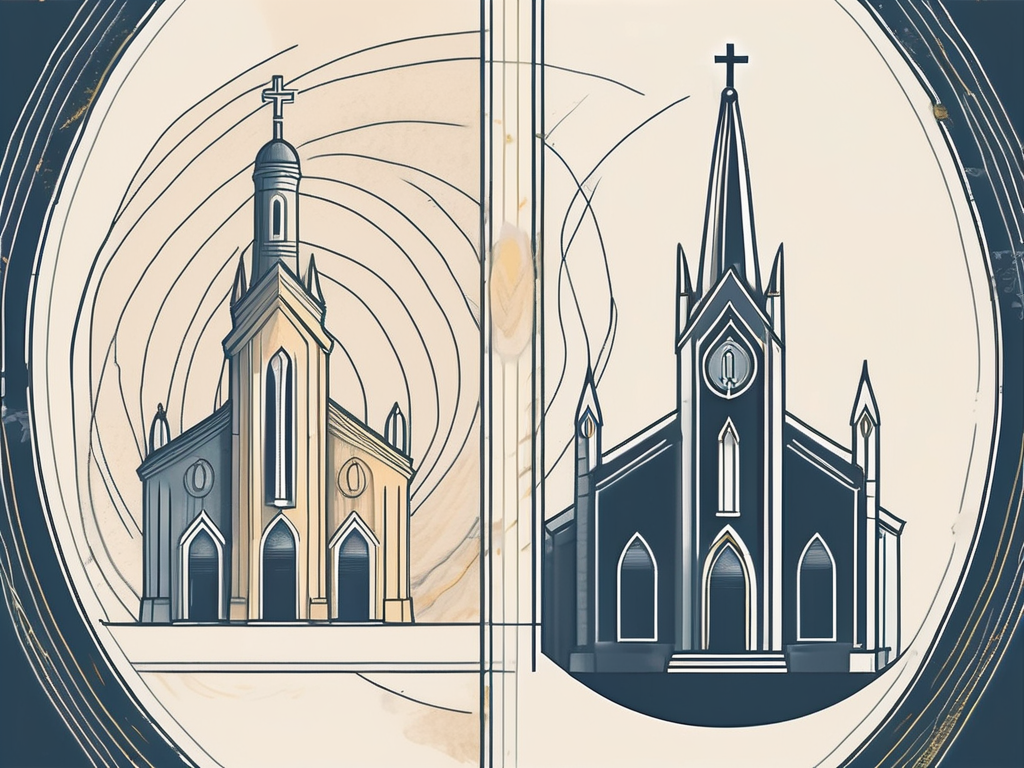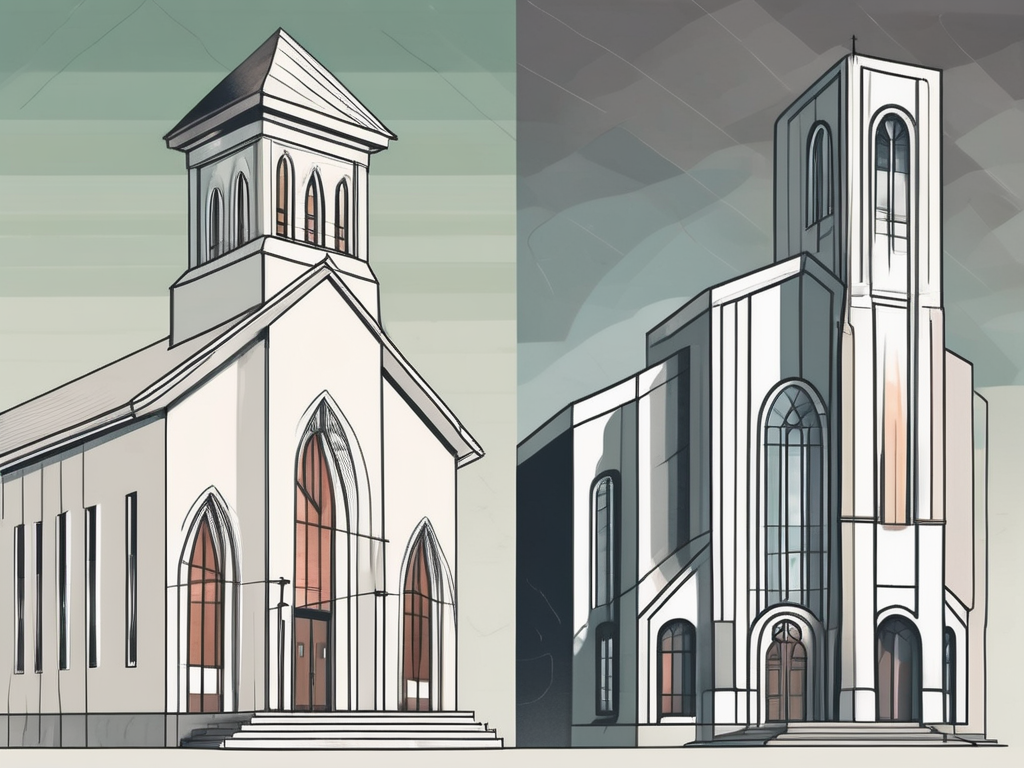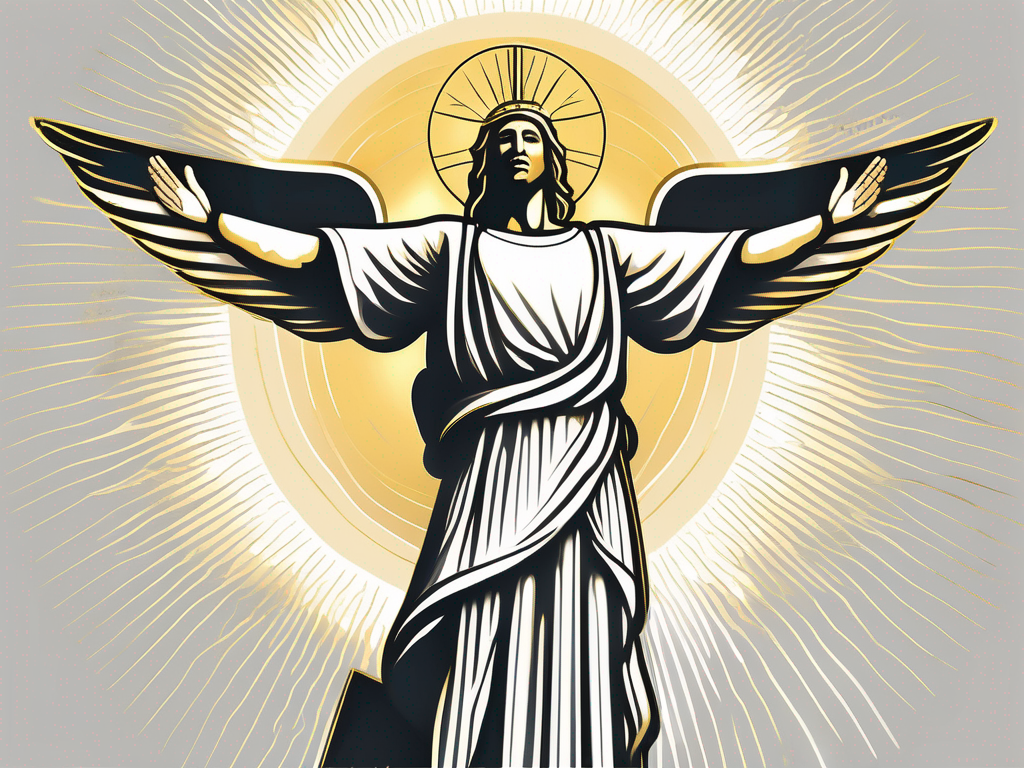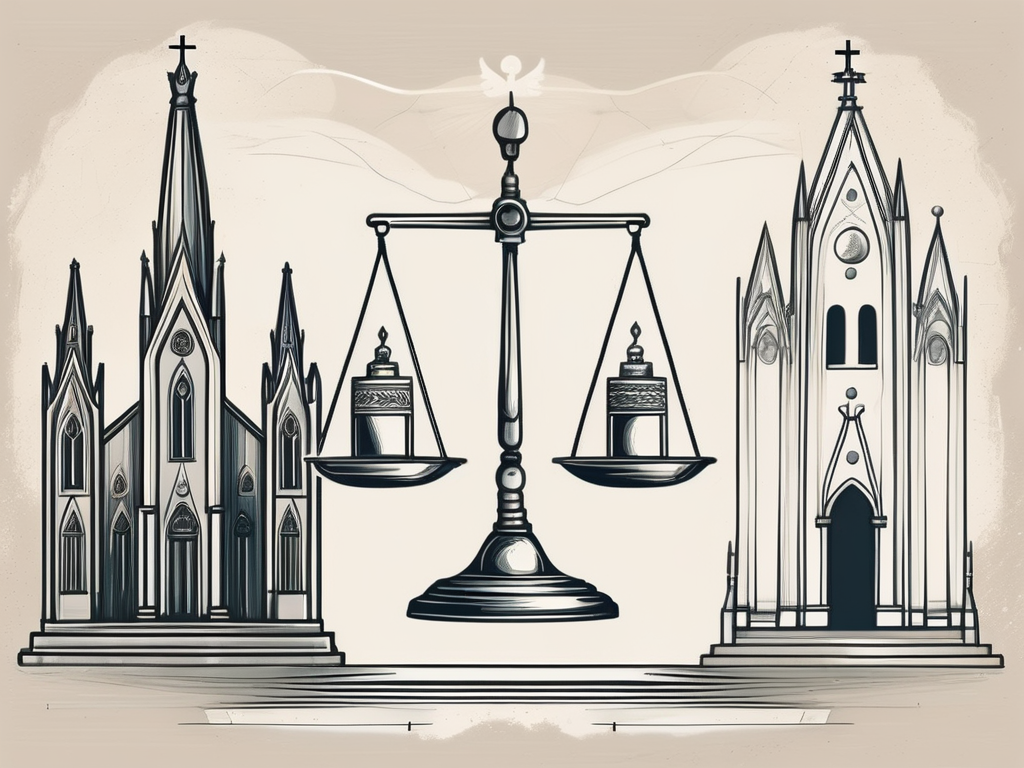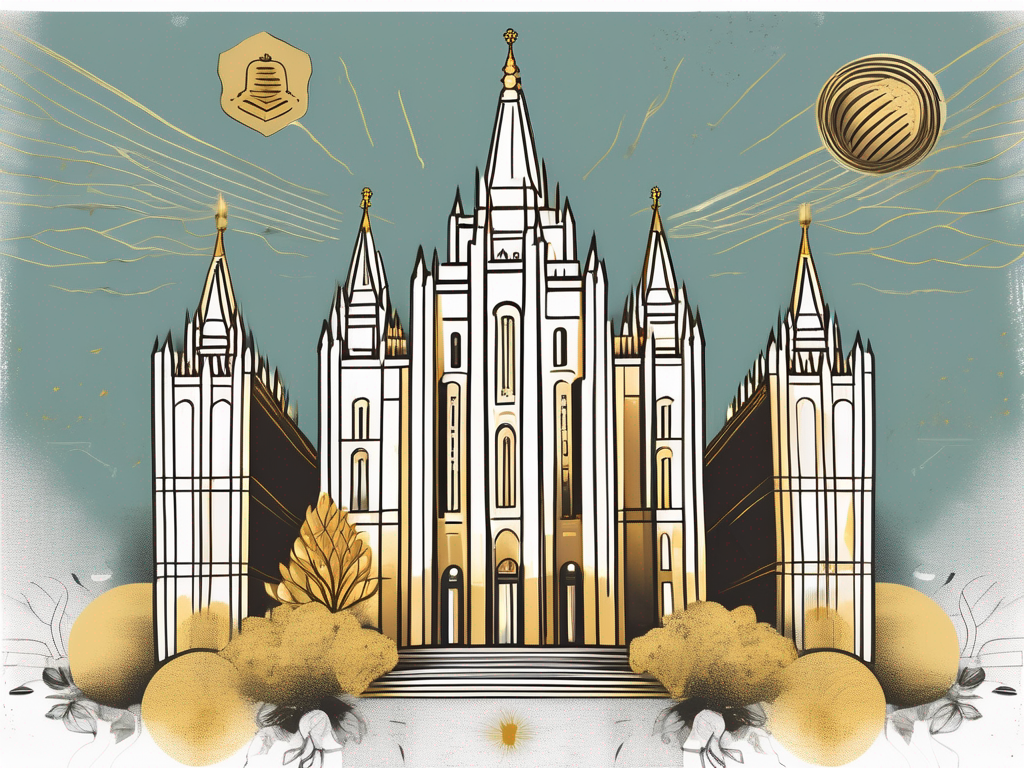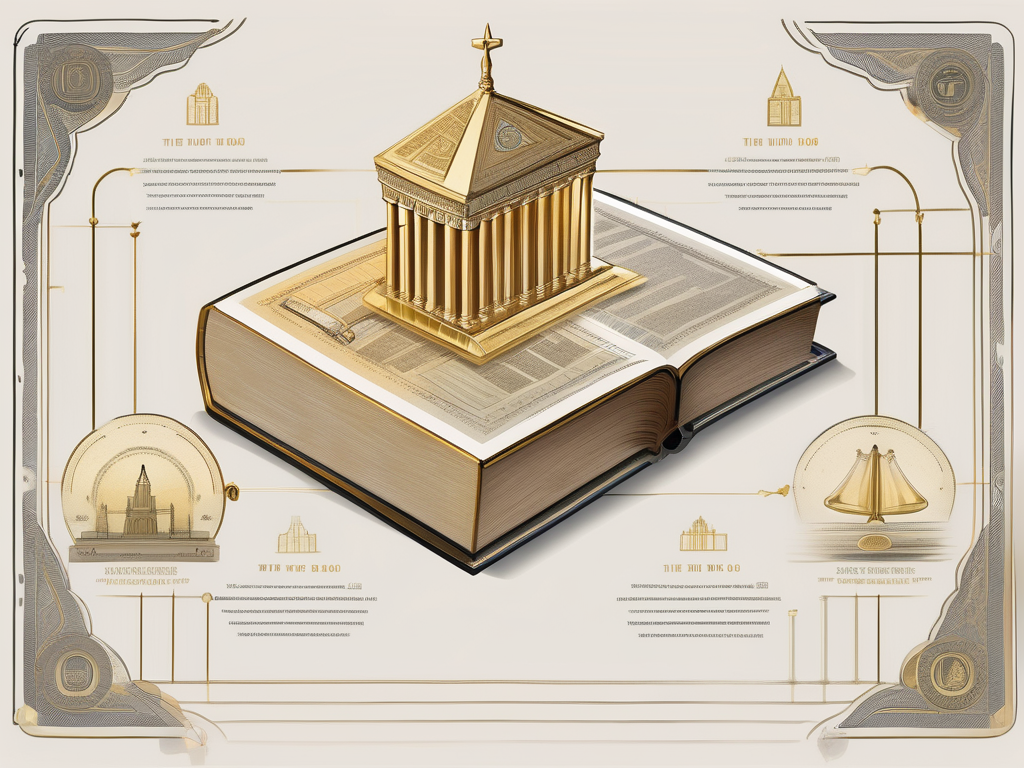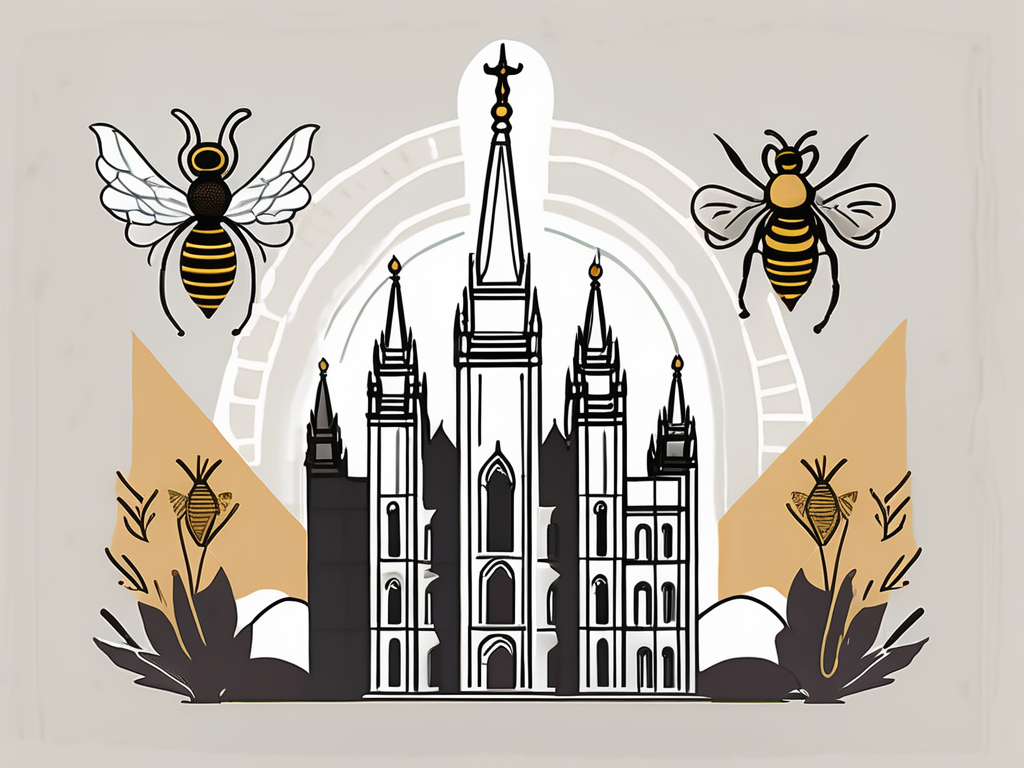In a world full of diverse religious beliefs, Christianity and Mormonism emerge as two significant faith traditions. While both share common ground in their devotion to God and the teachings of Jesus Christ, they also have distinct differences in their doctrines and practices. Understanding these aspects can shed light on the unique perspectives each religious community brings to the table. In this article, we will embark on a comparative journey exploring the origins, core beliefs, theological disparities, and shared practices of Christianity and Mormonism.
Understanding the Basics of Christianity
Before delving into the intricate details, let’s establish a foundational understanding of Christianity. With a history spanning over two thousand years, this faith traces its roots back to the life and teachings of Jesus Christ. Christians place their trust in Jesus as the Son of God and the savior of humanity. They believe in the Holy Trinity, consisting of the Father, Son, and Holy Spirit, and seek to follow the teachings of the Bible.
The Origin and History of Christianity
Christianity originated in the first century AD within the Roman Empire. It emerged as a movement among Jewish followers of Jesus Christ and gradually expanded to encompass diverse cultures and regions over time. Its history is marked by significant events such as the teachings of influential figures like Paul the Apostle, the establishment of the early Christian Church, and the spread of Christianity as the official religion of the Roman Empire in the fourth century AD.
As Christianity grew, it encountered various challenges and underwent significant transformations. The early Christians faced persecution from the Roman authorities, which led to the martyrdom of many believers. However, this persecution also fueled the spread of Christianity as it gained a reputation for its steadfastness and resilience in the face of adversity.
One of the most influential figures in the early Christian movement was Paul the Apostle. Originally a persecutor of Christians, Paul underwent a dramatic conversion experience and became one of Christianity’s most zealous advocates. His letters, known as the Pauline Epistles, played a crucial role in shaping Christian theology and providing guidance to the early Christian communities.
Over time, Christianity diversified into various branches and denominations, each with its own unique traditions and practices. The Great Schism of 1054 resulted in the split between the Eastern Orthodox Church and the Roman Catholic Church, marking a significant division within Christianity. Later, the Protestant Reformation in the 16th century led to the emergence of Protestant denominations, challenging the authority and practices of the Catholic Church.
Core Beliefs and Practices in Christianity
Central to Christianity is the belief in Jesus Christ’s birth, life, death, and resurrection, which Christians consider as the ultimate act of redemption and salvation for humanity. They also emphasize the importance of faith in Jesus, repentance for sins, and the pursuit of a righteous life guided by the teachings of the Bible.
Christianity teaches that all humans are born with a sinful nature inherited from Adam and Eve, the first humans. However, through Jesus’ sacrifice on the cross, believers can be forgiven of their sins and reconciled with God. This concept of salvation through faith in Jesus is a cornerstone of Christian theology.
In addition to faith, Christians believe in the power of prayer and the importance of cultivating a personal relationship with God. Prayer serves as a means of communication with God, allowing believers to express their gratitude, seek guidance, and find comfort in times of need.
Christian worship typically involves attending church services, participating in sacraments such as baptism and communion, and engaging in prayer and worship. The sacraments hold deep significance for Christians, representing moments of spiritual transformation and connection with God. Baptism symbolizes the cleansing of sins and entry into the Christian community, while communion commemorates Jesus’ Last Supper and his sacrifice on the cross.
The Structure and Organization of the Christian Church
The structure of the Christian Church can vary across denominations, but it generally revolves around the local church community, led by clergy such as pastors or priests. Christianity has a rich diversity of traditions, including Roman Catholicism, Eastern Orthodoxy, and various Protestant denominations. Each tradition possesses its own distinct rituals, liturgies, and governance systems, reflecting the theological and cultural differences within the broader Christian faith.
In Roman Catholicism, the Pope serves as the head of the Church and is believed to be the successor of Saint Peter, one of Jesus’ disciples. The Pope is considered the spiritual leader and the highest authority in matters of faith and doctrine. The Catholic Church is organized into dioceses, each led by a bishop, who oversees the spiritual welfare of the local community.
Eastern Orthodoxy, on the other hand, places a strong emphasis on the authority of the bishops collectively, known as the Holy Synod. The Orthodox Church is organized into autocephalous churches, each led by a patriarch or metropolitan, who exercises spiritual leadership within their respective regions.
Protestant denominations, which emerged from the Protestant Reformation, have a more decentralized structure. They often prioritize the autonomy of individual congregations and emphasize the priesthood of all believers, meaning that all believers have direct access to God without the need for intermediaries.
Despite their differences, all Christian denominations share a common goal of spreading the message of Jesus Christ and living out their faith through acts of love, compassion, and service to others.
Delving into the Foundations of Mormonism
On the other hand, Mormonism, also known as The Church of Jesus Christ of Latter-day Saints, constitutes a relatively newer religious tradition that emerged in the early 19th century. Founded by Joseph Smith, this faith draws inspiration from both the Bible and additional scriptures, such as the Book of Mormon, which Mormons regard as another testament of Jesus Christ.
Mormonism is a fascinating religion that has its roots in the early 19th century. It all began in upstate New York when Joseph Smith claimed to have received divine revelation. This revelation led to the publication of the Book of Mormon in 1830, which is considered a sacred text by Mormons. The movement rapidly expanded under Smith’s leadership, attracting followers who were drawn to the unique teachings and beliefs of the faith.
As Mormonism gained momentum, it faced significant challenges and persecution. The church was met with hostility and opposition, which eventually led to the Mormons migrating westward. They established settlements in what would become the state of Utah, where they could practice their religion freely and build a community based on their beliefs.
Today, Mormonism has a global presence with millions of followers worldwide. The faith has spread far beyond its origins in upstate New York and Utah, reaching every corner of the globe. It continues to attract new converts who are captivated by its teachings and the sense of community that comes with being a part of the Church of Jesus Christ of Latter-day Saints.
The Emergence and Evolution of Mormonism
Mormonism originated in upstate New York when Joseph Smith claimed to have received divine revelation, leading to the publication of the Book of Mormon in 1830. The movement rapidly expanded under Smith’s leadership, and the church faced persecution, eventually migrating west to establish settlements in what would become the state of Utah. Today, Mormonism has a global presence with millions of followers worldwide.
The emergence and evolution of Mormonism is a fascinating story that sheds light on the religious landscape of the early 19th century. Joseph Smith’s claim of receiving divine revelation was met with both skepticism and curiosity. The publication of the Book of Mormon, which Mormons believe to be a sacred text, marked a significant milestone in the development of the faith.
As the movement grew, so did the challenges it faced. Persecution and opposition were constant companions of the early Mormons. Despite these hardships, the faith continued to attract followers who were drawn to its teachings and the sense of community it provided. The decision to migrate westward was a pivotal moment in the history of Mormonism, as it allowed the church to establish a stronghold where they could practice their religion freely.
Over time, Mormonism has evolved and adapted to the changing world. The faith has embraced modern technology and communication methods to spread its message and connect with believers around the globe. The Mormon community has also become more diverse, with members from different cultural backgrounds and walks of life coming together to worship and support one another.
Fundamental Teachings and Rituals in Mormonism
Mormonism introduces distinctive teachings that separate it from mainstream Christianity. Mormons believe that the original Christian Church fell into apostasy and that Joseph Smith’s restoration of the true church reestablished God’s authority on earth. They emphasize the eternal nature of families, modern-day revelation, and the potential for individuals to become gods in the afterlife. Mormon worship involves attending Sunday services, engaging in personal and family prayer, and participating in sacred rites performed within their temples.
The fundamental teachings of Mormonism provide a unique perspective on spirituality and the nature of God. The belief in the restoration of the true church is central to the faith, as Mormons see themselves as the continuation of the original Christian Church established by Jesus Christ. This restoration is believed to have occurred through Joseph Smith, who is regarded as a prophet and the founder of the faith.
One of the key teachings of Mormonism is the eternal nature of families. Mormons believe that families can be together forever, even after death. This belief brings comfort and hope to believers, who strive to build strong family bonds and create a loving and supportive environment for their loved ones.
Another distinctive aspect of Mormonism is the belief in modern-day revelation. Mormons believe that God continues to communicate with his children through prophets and personal revelation. This belief in ongoing divine guidance provides a sense of direction and purpose for believers as they navigate their lives.
Mormon worship involves attending Sunday services, where members gather to learn from church leaders and participate in sacraments. Personal and family prayer are also important practices in the faith, allowing individuals to connect with God on a personal level and seek guidance in their daily lives. Additionally, Mormons participate in sacred rites performed within their temples, which are considered holy and set apart from regular meetinghouses.
The Hierarchical System in the Mormon Church
The Church of Jesus Christ of Latter-day Saints operates under a hierarchical leadership structure led by a president, who is regarded as a prophet, seer, and revelator. The church is organized into local congregations called wards or branches, overseen by bishops or branch presidents. Mormons also uphold the importance of a lay ministry, with members voluntarily fulfilling various leadership and service roles within the church.
The hierarchical system in the Mormon Church provides a framework for governance and leadership. At the head of the church is the president, who is believed to receive divine guidance and revelation for the entire faith. This individual is seen as a prophet, seer, and revelator, responsible for leading the church and providing spiritual direction to its members.
Local congregations, known as wards or branches, are overseen by bishops or branch presidents. These leaders serve as spiritual guides and provide support to the members of their respective congregations. They are responsible for overseeing the day-to-day operations of the church, including organizing meetings, offering counsel, and providing assistance to those in need.
Mormons also uphold the importance of a lay ministry, which means that members voluntarily fulfill various leadership and service roles within the church. This approach allows individuals to develop their talents and contribute to the growth and well-being of the community. It also fosters a sense of ownership and responsibility among the members, as they actively participate in the functioning of the church.
The hierarchical system in the Mormon Church ensures that there is a structure in place to provide guidance and support to its members. It allows for effective organization and coordination of activities and ensures that the teachings and principles of the faith are upheld and shared with believers worldwide.
Theological Differences between Christianity and Mormonism
While Christianity and Mormonism share similarities in their devotion to Jesus Christ, they differ in various theological aspects. These differences can be glimpsed through the contrasting perspectives they hold on topics such as the nature of God, salvation, and scriptural interpretation.
Views on God and the Trinity
Christianity’s traditional understanding of the Trinity refers to God as one essence existing in three persons: the Father, the Son (Jesus Christ), and the Holy Spirit. In contrast, Mormonism teaches that God the Father, Jesus Christ, and the Holy Spirit are distinct beings with separate bodies and roles. Mormons believe that individuals also have the potential to advance and become gods themselves in the afterlife.
Perspectives on Salvation and Afterlife
Christianity places salvation in faith in Jesus Christ alone and views the afterlife as an eternal existence in heaven or hell. Conversely, Mormonism promotes the concept of salvation through faith, good works, and adherence to Mormon doctrines. Mormons envision heaven as multiple levels of glory, accessible to individuals based on their fidelity and adherence to the teachings of the Church.
Interpretations of the Bible and Other Scriptures
While Christianity regards the Bible as the primary authoritative text, Mormonism incorporates additional scriptures such as the Book of Mormon, the Pearl of Great Price, and the Doctrine and Covenants. Mormons believe that Joseph Smith translated these texts through divine revelation. Alongside the Bible, these additional scriptures play a central role in shaping Mormon theology and practices.
Similarities in Christian and Mormon Practices
Despite their theological disparities, Christianity and Mormonism also share common ground in their religious practices and values. Recognizing these shared aspects can foster understanding and dialogue between the two communities.
Worship and Prayer Traditions
Both Christianity and Mormonism emphasize the importance of worship and prayer. Christians engage in communal worship through regular church services, where they sing hymns, listen to sermons, and participate in prayers. Similarly, Mormons gather for Sunday worship services, which include hymn singing, scriptural lessons, and opportunities for congregational prayer.
Role of Family and Community
Family holds a significant place in both Christianity and Mormonism. Both traditions value the importance of strong family bonds and mutual support. Christians often view the family as a fundamental building block of society, emphasizing love, respect, and care for one another. Mormonism places an added emphasis on eternal families, believing that familial relationships extend into the afterlife.
Philanthropy and Service to Others
Christianity and Mormonism both emphasize the importance of serving others and giving back to the community. Christians are encouraged to practice acts of charity and engage in philanthropic endeavors to alleviate suffering and uplift those in need. Similarly, Mormons actively engage in acts of service, both within their own faith community and beyond, striving to follow Jesus’ teachings by making a positive impact in the world.
In conclusion, Christianity and Mormonism offer distinct religious perspectives, each with its own rich history, beliefs, and practices. While they share commonality in their devotion to Jesus Christ and belief in a divine higher power, their theological differences and unique traditions diversify the religious landscape. By understanding and appreciating these differences, we can foster mutual respect and dialogue, deepening our knowledge of the diverse religious tapestry that enriches our world.
